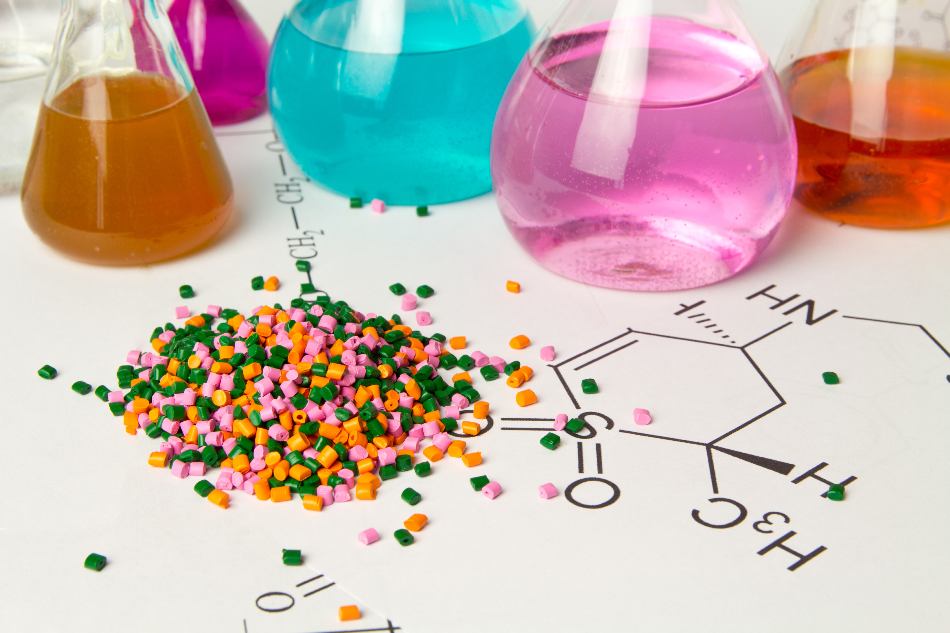
SMAK_Photo / Shutterstock
Superabsorbent polymers (SAPs) are a type of polymer that can both absorb and retain very large quantities of a liquid relative to their mass. With possible swelling ratios of up to 1000:1, SAPs or slush powders have recently played an important role as advanced construction materials.
What are SAPs?
The hydrophilic material works by bonding with water molecules, due to the presence of hydrogen in the polymer. They were developed in the 1960s by the United States Department of Agriculture (USDA), who grafted acrylonitrile polymer onto starch molecules and found that the resulting gel could absorb water up to 400 times its weight. The USDA subsequently shared the technology with US companies for research and development of commercial applications.
Modern SAPs are manufactured using either acrylic acid (AA) or acrylamide (AM). The source material is salified, and the resulting powder can either be used as-is or converted into a gel.
As well as their hydrophilic properties, SAPs also display high absorbency under load (AUL), high durability and stability in storage, high biodegradability without forming toxic species, pH-neutrality, colorlessness, odorlessness, non-toxicity, photostability and high mechanical strength (in gel form).
SAPs in Construction
SAPs have traditionally been used in personal hygiene products, with the first commercial applications brought to market in 1978 as feminine napkins and disposable bed liners for nursing homes. In construction, SAPs are found in fire protection and can be used to strengthen cement and create self-healing.
Fire-Retardant Gels
Gels composed of SAPs can absorb hundreds of times their weight in water. When coated on building surfaces, the water in these gels can have lifesaving consequences for building occupants in the event of a fire.
In this application, the water is encased in tiny polymer shells (or bubbles), which can be sprayed onto the building surface. When sprayed, the bubbles stack on top of one another and form a protective coating. This coating is fire-retardant, as flames cannot burn through the water in the gel. The flame can only reach the coated surface if it evaporates all of the water in the gel.
Depending on the conditions of the fire, fire-retardant gels can protect building surfaces for up to 36 hours. Due to the re-wetting ability of some SAPs, even gels whose water has been completed evaporated can return to their fire-retardant function through simply hosing the affected surface with water.
Strong and Self-Healing Concrete
As a ceramic-based material, concrete – widely used in modern construction – is known to degrade over time. This degradation usually occurs in cracks in the concrete, which in turn reduces its mechanical strength and the building’s overall structural integrity.
Adding SAPs to the cement mix results in a concrete that is more resistant to cracks forming. Using a hydrophilic polymer salt in cement increases its bending and compression strength, blocking cracks from forming as small fractures in the final material is not able to pass through the density of water that it can retain. This is due to the higher relative strength of water’s covalent molecular bonds to the electrostatic bonds of ceramic calcium alginate.
Interestingly, adding SAPs that have had bacteria embedded within them to cement also produces concrete that can heal itself when cracks do occur. Water passing through the cracks is absorbed by the SAP, which swells to prevent the crack from extending. The water now contained in the SAP material can mix with the surrounding cement, which will ultimately cure again, enabling the crack to completely reseal itself.
A company in the Netherlands, Basilisk Concrete, is leading the way in commercial applications of this advanced building material. Projects using their concrete and additives include a 1000 sq m water basin in the Port of Rotterdam, crack repair in the Groninger Forum and leakage prevention in an Apeldoorn parking garage.
Basilisk believes their concrete products using SAPs can help minimize the environmental damage of concrete, as less concrete is needed due to the strength added by SAPs in the mix, and fewer repairs and demolitions will be required when more buildings use this innovative new technology.
Sources
- Behera, S. and Mahanwar, P.A. (2019). Superabsorbent polymers in agriculture and other applications: a review. Polymer-Plastics Technology and Materials, pp.1–16.
- Mignon, A., Devisscher, D., Graulus, G.-J., Stubbe, B., Martins, J., Dubruel, P., De Belie, N. and Van Vlierberghe, S. (2017). Combinatory approach of methacrylate alginate and acid monomers for concrete applications. Carbohydrate Polymers, 155, pp.448–455.
- Mignon, A., Vermeulen, J., Snoeck, D., Dubruel, P., Van Vlierberghe, S. and De Belie, N. (2017). Mechanical and self-healing properties of cementitious materials with pH-responsive semi-synthetic superabsorbent polymers. Materials and Structures, 50(6).
Disclaimer: The views expressed here are those of the author expressed in their private capacity and do not necessarily represent the views of AZoM.com Limited T/A AZoNetwork the owner and operator of this website. This disclaimer forms part of the Terms and conditions of use of this website.